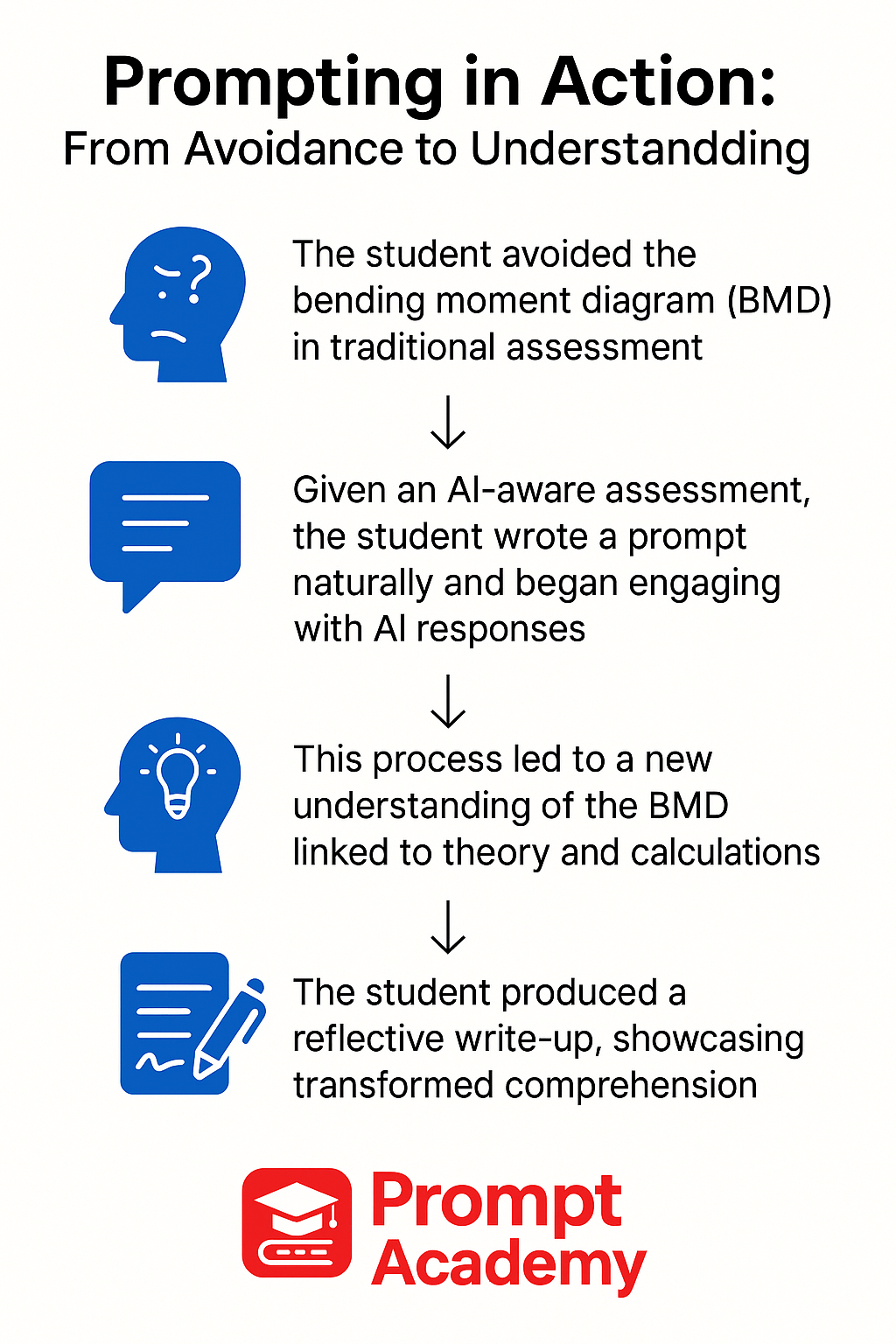Prompting in Action showcases how the techniques introduced in Prompt Academy are applied in real classrooms, coaching sessions, and research writing environments. This section brings theory to life through practical examples, student reflections, and educator impact stories.

Prompting in Action: From Avoidance to Understanding
Stage 1 – Avoidance:
In traditional assessments, many students avoided constructing or interpreting the bending moment diagram (BMD). This was often due to a lack of understanding, perceived irrelevance, or the assumption that it had little connection to calculations and theory. The BMD was treated as optional rather than essential.
Stage 2 – AI-Aware Assessment Introduced:
Stage 2 – AI-Aware Assessment Introduced:
When students were given an AI-aware assessment, the task design indirectly embedded prompting techniques such as prompt chaining and chain-of-thought (CoT). Without being told what the techniques were, students naturally generated prompts while working through the task. They used AI tools like ChatGPT to explore ideas, ask questions, and clarify their understanding.
Stage 3 – Cognitive Shift and Understanding:
Through this process, students encountered multiple AI responses and began to reflect critically on the explanations. Over time, this led to a deeper understanding of the BMD. They began to see its relationship to force, moment, support reactions, and structural theory—connecting diagrams to calculations and conceptual reasoning.
Stage 4 – Reflective Output
Finally, students were required to produce a reflection. To complete this, they had to review the AI-generated responses, evaluate them, and write a final explanation using their own words. The result was not only improved technical explanation, but visible evidence of transformed comprehension. Students no longer saw the BMD as irrelevant—they understood its meaning and role in engineering logic.
👩🏫 Educator Impact
Educators report deeper student engagement and better assessment outcomes after integrating prompting into their teaching.
- Lecturers redesigned rubrics to assess reflective prompts instead of final answers.
- Teachers guided students to self-evaluate AI output using scaffolded checklists.
- Prompting supported the shift toward formative, AI-aware assessment practices.